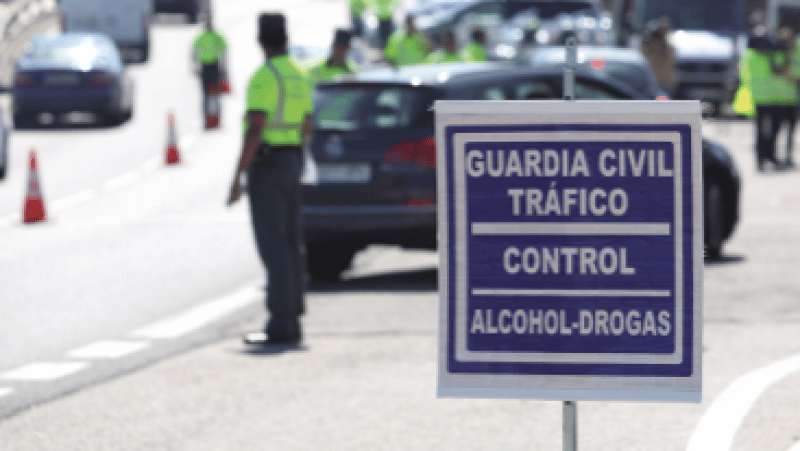The DGT forecasts that this month there will be 49 million journeys on the roads of Spain. August is the period of the year in which a greater number of people travel to enjoy their holidays and the DGT has already warned that during all weekends it will launch special traffic regulation and surveillance devices.
But in addition, the DGT will monitor with special intensity the consumption of alcohol and drugs at the wheel in a special control campaign, which will last throughout this week and into the weekend.
The controls in which the consumption of alcohol and drugs among drivers will be especially monitored will last until 15 August. The DGT has already warned that these preventive controls will be carried out “at any time of the day and on any road”.
It should be remembered that the new Traffic Law approved this year has introduced the 0 rate of alcohol, both in blood and in exhaled air, for drivers under 18 years of age in all types of vehicles, not only cars but also bicycles, scooters and mopeds with AM and A1 permission. In addition, this regulation includes the obligation that all newly manufactured vehicles dedicated to passenger transport carry a pre-installation of the so-called alcolock, a device connected to the ignition system that prevents the vehicle from starting if the driver exceeds the permitted alcohol level.
The detection tests for narcotic substances are carried out independently of the breathalyser tests or after them when the agents perceive signs of driving under the influence or during preventive controls.
To perform the drugs test, the driver gives a saliva sample, which is collected in a special capsule. A device analyses it and, if the result is positive, a second sample is taken and sent to a laboratory for analysis. The positive laboratory test will serve to establish the sanction and identifies five types of substances: amphetamines, cocaine, methamphetamines, cannabis, and opiates.
To do the breathalyser test, the officer hands a breathalyser to the driver. This device detects the concentration of alcohol in expired air. To reduce the margin of error, two types are used: one more sensitive and the other more specific.
The driver breathes in and out the air in the breathalyser. If the rate is negative (0-0.25 mg/l), the agents allow the driver to continue driving. If it is positive (+0.25 mg/l), the driver can ask for a blood confirmation and the vehicle will be immobilised. Depending on the rate, it will carry a fine and loss of points.
The DGT will monitor these days especially that drugs or alcohol are not consumed and appeals to the responsibility of drivers so that these substances are zero at the wheel. Driving with a level of alcohol greater than 0.50 mg/l in exhaled air, driving with the presence of drugs in the body, refusing to take alcohol and drug tests or driving with a level greater than 0.30 mg/l in expired air if you are a professional driver or your license is not more than 2 years old are behaviours punished with six points lost from the licence and a fine of 1,000 euro. In addition, these violations can be considered a criminal offence.
Driving with an alcohol level of between 0.25 mg/l and 0.50 mg/l or with a rate of between 0.15 and 0.30 mg/l is also punished with the loss of four points and a fine of 500 euro. in the case of professional drivers and drivers with a licence for less than two years, infractions that can also constitute a criminal offence.
Alcohol, drugs and psychopharmaceuticals are a major road safety problem. In fact, half of the drivers killed in traffic incidents last year tested positive for one of these substances or a combination of them.
In addition, 75% of motorists who tested positive had a very high blood alcohol level, equal to or greater than 1.2 g/l, which represents very severe intoxication, according to the conclusions included in the Memory of Toxicological Findings in Victims of Traffic Accident, prepared by the National Institute of Toxicology and Forensic Sciences (INTCF), with the collaboration of the National Road Safety Observatory.





